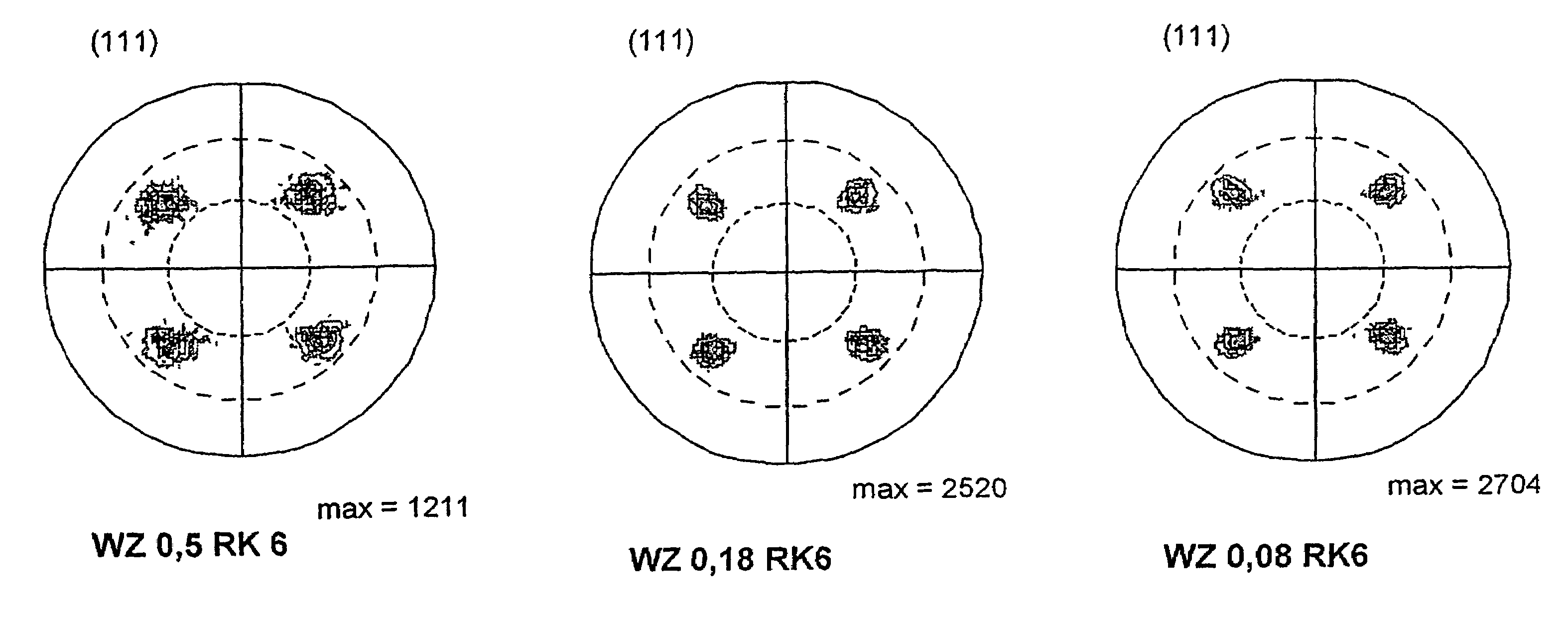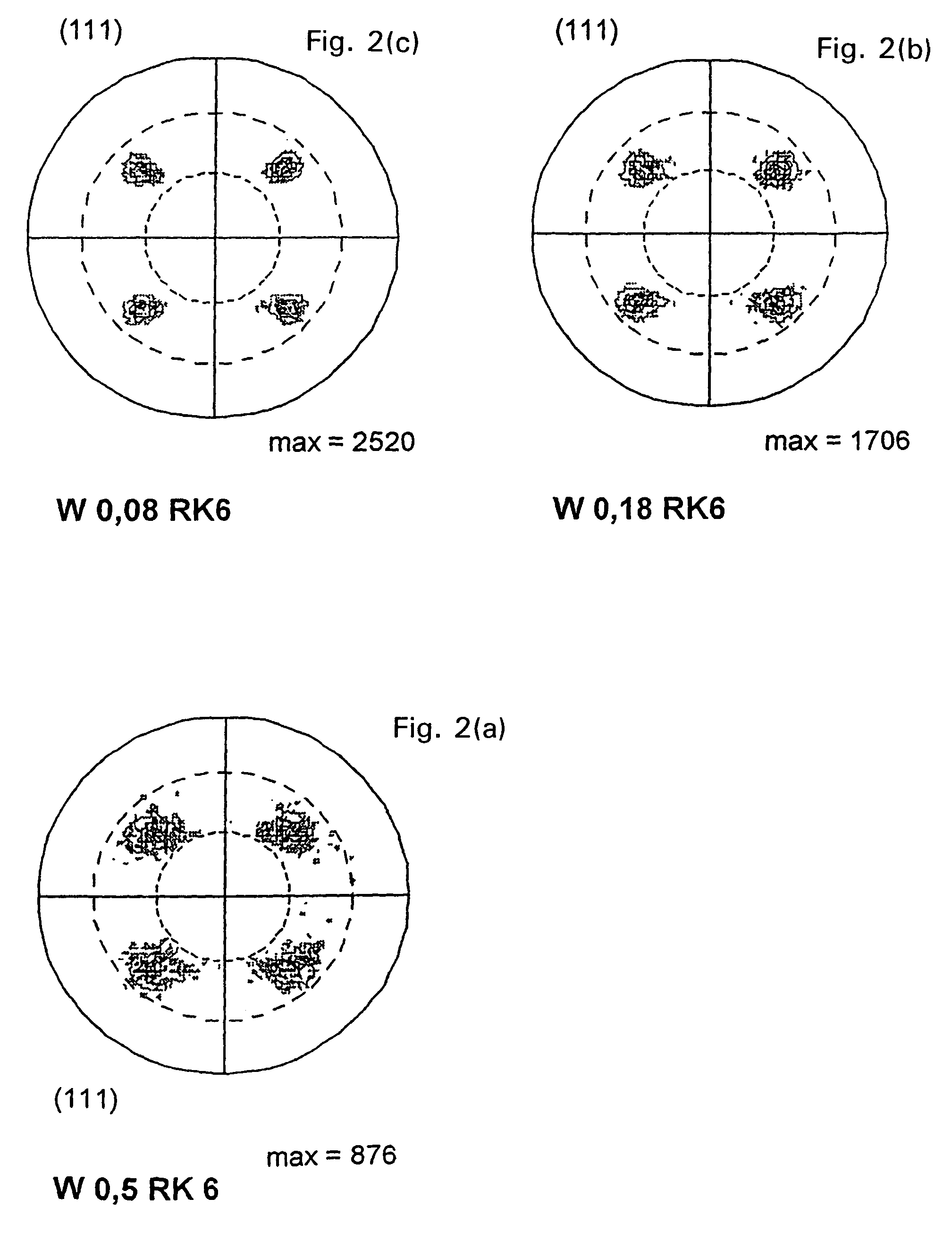Method for producing metallic strips
- Summary
- Abstract
- Description
- Claims
- Application Information
AI Technical Summary
Benefits of technology
Problems solved by technology
Method used
Image
Examples
example 2
[0040]Technically pure nickel with a degree of purity of 99.9 atom percent, after being cast in a copper mold with a cross-section of about 40 mm×40 mm, is reworked by chip removal, then hot rolled to 20 mm×20 mm and annealed at 1050° C. to homogenize it. In order to provide a finely-grain structure, a 10 mm×10 mm cross-section is cold rolled and annealed so as to recrystallize it. From a thickness of 10 mm, the sample is slide drawn to a thickness of 2.5 mm. This is followed by cold conversion by roll drawing to a final thickness of 0.25 mm. A heat treatment at 800° C. follows in order to produce the high-grade cubic texture in the nickel strip.
example 3
[0041]A nickel alloy, containing 5 atom percent of tungsten, is cold rolled from a cross-sectional dimensions of 20×20 m2 to a thickness of 3 mm and recrystallized at 850° C. in order to produce a finely crystalline structure. A thickness of 3 mm is roll drawn to a thickness of 0.15 mm and annealed at 1000° C. to achieve a high-grade cubic texture. It is, however, also possible to carry out the roll drawing only to 0.20 mm thickness and to undertake the final rolling to 0.15 mm with polished rollers, in order to achieve the highest possible surface quality of the strip with minimum roughness.
example 4
[0042]After an initial annealing, copper sheet, 10 mm thick, is cold drawn to the final thickness dimension of 0.08 mm through freely rotatable rolls in order to produce a soft structure. During the subsequent 30-minute heat treatment at 400° C., a sharp cubic texture is formed in the strip material.
PUM
| Property | Measurement | Unit |
|---|---|---|
| Fraction | aaaaa | aaaaa |
| Fraction | aaaaa | aaaaa |
| Thickness | aaaaa | aaaaa |
Abstract
Description
Claims
Application Information
 Login to View More
Login to View More - R&D
- Intellectual Property
- Life Sciences
- Materials
- Tech Scout
- Unparalleled Data Quality
- Higher Quality Content
- 60% Fewer Hallucinations
Browse by: Latest US Patents, China's latest patents, Technical Efficacy Thesaurus, Application Domain, Technology Topic, Popular Technical Reports.
© 2025 PatSnap. All rights reserved.Legal|Privacy policy|Modern Slavery Act Transparency Statement|Sitemap|About US| Contact US: help@patsnap.com



